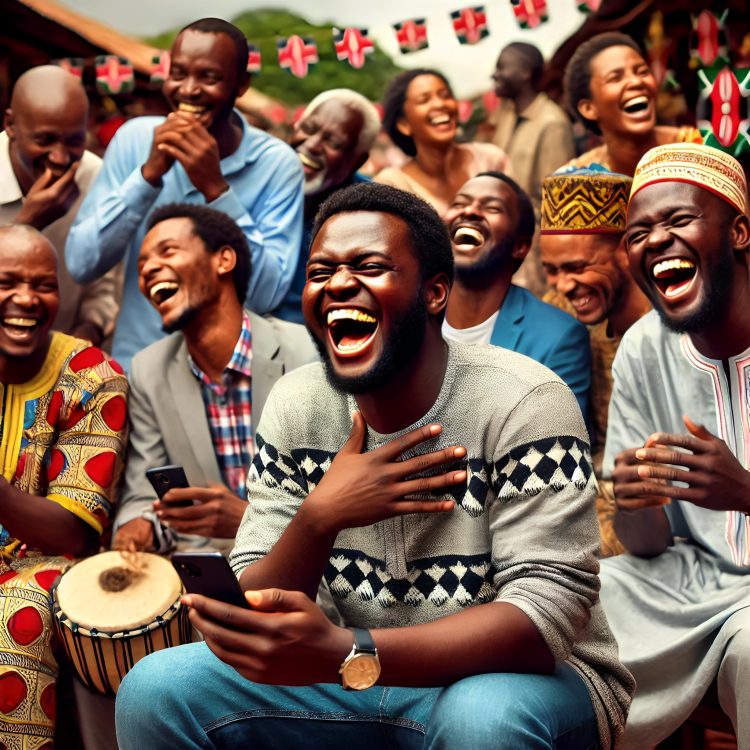As soon as upon a time in Africa, the rhythm of data wasn’t typed—it was drummed. “Speaking drums”, which mimicked the tonal patterns of African languages, echoed by means of villages, relaying coded messages over miles of terrain. These beats bounced off baobab timber, rustled thatched roofs, and summoned communities to motion.
Marketplaces acted as the unique social networks—buzzing hubs the place gossip, commerce, and information intertwined. Chiefs’ courtyards served as public parliaments, the place elders debated issues of the day, and oral storytelling preserved communal reminiscence and ethical instruction.
At present, that communal drumbeat has developed into the digital ping of smartphones. The city sq. is now a WhatsApp group; civic debates occur not underneath mango timber however in fiery Twitter threads and viral TikTok duets. Africa’s public sphere has develop into digital, remodeling how info is shared, who shares it, and what outcomes come up from it.
GFA President Kurt Okraku warns he’ll take authorized motion in opposition to those that falsely accuse him of being a “thief.” All he needed to say…
The roots of conventional communication
)
Conventional African communication—deeply tied to cultural norms and symbolic expression—predates the written phrase. It includes verbal and non-verbal channels, such because the city crier, speaking drums, bells, gongs, and raffia symbols. In keeping with Ugboajah, these methods replicate a wealthy interaction between neighborhood traditions, interpersonal relationships, and ethical codes.
Yoruba dùndún drums and Asante atumpan drums may relay messages throughout 32 kilometres, handed on by different drummers in a series response of rhythm and that means. Communication, on this context, was localised but highly effective—trusted due to the communal belief within the supply, and efficient due to its immediacy and accessibility.
However whereas these strategies saved rural communities—representing practically 80% of Africa’s inhabitants—knowledgeable and engaged, the tide of expertise has launched new types of dialogue.
The digital drumbeat
At present’s social media platforms—Twitter (now X), WhatsApp, Fb, and TikTok—have given thousands and thousands of Africans unprecedented entry to public discourse. People who had been as soon as unvoiced or marginalised now command world consideration by means of viral content material and coordinated campaigns.
)
READ MORE: Hajia4Reall to pay $1.3M to 40 romance scam victims after release
Hashtags like #EndSARS in Nigeria, #ShutItAllDown in Namibia, and #FixTheCountry in Ghana haven’t solely sparked conversations but in addition mobilised mass protests and pressured governments. A 2022 Afrobarometer report revealed that over 40% of African youth use social media to trace political developments, highlighting the emergence of a dynamic, digital citizenry.
Misinformation within the meme age
Nevertheless, this new communication period has its pitfalls. As griots as soon as embellished oral histories for dramatic impact, modern-day influencers typically favour engagement over accuracy. Misinformation spreads quickly, particularly by way of WhatsApp, Africa’s most generally used messaging platform.
From miracle well being cures to politically motivated conspiracy theories, digital areas are sometimes rife with unverified content material. Doctored movies, sensational headlines, and politically charged pretend information now coexist alongside reputable advocacy and citizen journalism—creating confusion in environments already challenged by low media literacy and fragile press freedoms.
)
Civic engagement within the age of emojis
Regardless of its flaws, the digital public sphere has energised civic engagement. Youth-led protests are coordinated by way of Google Docs and livestreamed on Instagram. Satirical political commentary, as soon as whispered in non-public, is now boldly shared as viral memes and animated skits.
In international locations the place conventional media is censored or tightly managed by the state, digital platforms supply various areas for dissent and dialogue. Civil society organisations and grassroots actions are leveraging expertise to coach, organise, and mobilise.
But, digital innovation has not utterly displaced conventional strategies. In lots of rural communities, the city crier nonetheless delivers messages on foot, and neighborhood radio—one among Africa’s oldest mass media codecs—continues to thrive. These stations more and more combine listener call-ins and WhatsApp suggestions traces, bridging the previous with the brand new.
READ MORE: ‘I thought I might die’ – Kofi Adomah thanks Ibrahim Mahama for eye injury support
![How to hold your smartphone [freepik]](https://image.api.sportal365.com/process/smp-images-production/pulse.com.gh/27092024/1d82dddc-1099-49e8-bfa2-914d739cefb3?operations=fit(1042:))
The problem forward is to harmonise Africa’s heritage of community-based communication with the borderless nature of digital discourse. By mixing the credibility and cultural resonance of conventional buildings with the immediacy and attain of recent instruments, Africa’s public sphere can develop into each inclusive and impactful.
Whether or not by means of the beat of a carved drum or the excitement of a viral tweet, the target stays the identical: to tell, to attach, and to encourage motion.
From baobab shade to broadband, Africa’s voice has by no means been louder—and eventually, the world is listening.

)
)